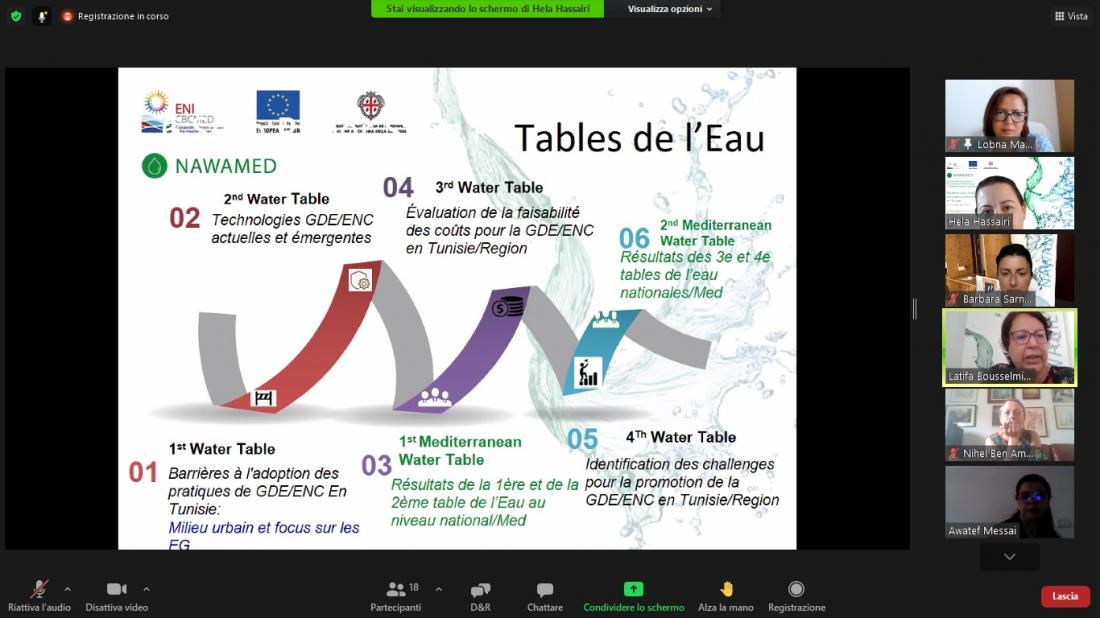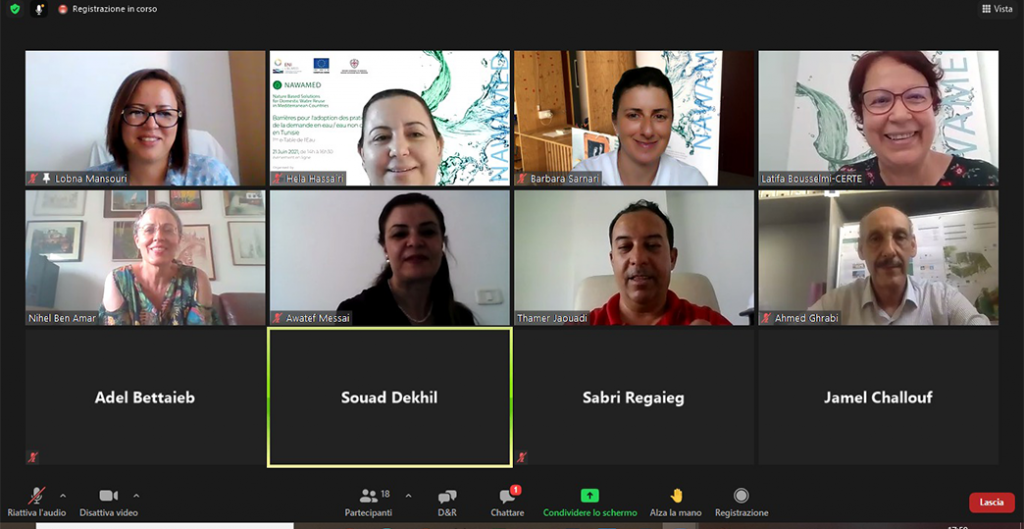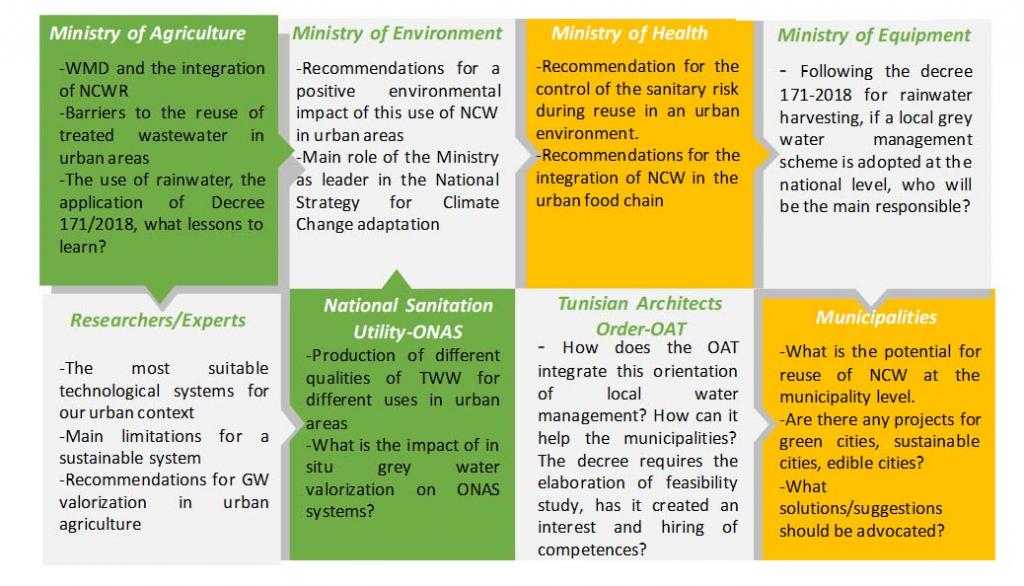NAWAMED: high level debate between Tunisian stakeholders on the barriers to the integration of non-conventional water resource

During the first stakeholders meeting “1st Tunisian e-Water Table” organized by the Centre for Water Researches and Technologies, CERTE, last June 21th, 2021, National stakeholders discussed and debated about specific barriers occurring within their country/regional context and what are the solutions to address such barriers in order to facilitate the integration of non-conventional water resource (NCWR) in water demand management (WDM) practices.

The meeting was coordinated by Prof. Latifa Bousselmi (national coordinator of NAWAMED project) and it was divided through three sessions: the first one focused on the national context; the second session was dedicated to the lessons learnt from projects tackling grey water related topics; thus, the third session was a discussion panel with national stakeholders on the barriers limiting the introduction of greywater reuse at local levels.
The main constraints that limit the full development of reuse, despite all the efforts to raise awareness and encourage it, are related to many aspects: institutional, regulation, economic, sanitary, social and environmental
Ms. Souad Dekhil from the General Directorate of Rural Engineering and Water Exploitation at the Ministry of Agriculture focused her presentation on barriers to the reuse of treated wastewater in Tunisia.
The development plan did not take into account the installation of a Treated Wastewater pipeline. The cost of connection and installation of irrigation systems. The reluctance to irrigate green areas with treated wastewater
Regarding the potential of treated water reuse in urban area, Mr. Thamer Jawadi, Director of the valorization of treated wastewater at the National Sanitation Utility (ONAS) said that only 0.34% of the volume of treated wastewater is used for irrigation of green areas.
How can grey water be valorized at low cost and sustainably as an alternative/additive water resource in a semi-arid Mediterranean environment?
In fact, Prof. Hachicha insisted in his presentation on the importance of disseminating research results to decision makers and on raising awareness of the interest of this valorization and potential health risks.
Prof. Bousselmi provided an example of the Technical Demonstration Center (TDC), an activity carried out by CERTE for the treatment of grey water produced by a university house. She presented the results obtained by the acceptability study that aims to establish the opinion of the students regarding the TDC and the reuse options of treated grey water in the toilet flushing and collecting rainwater for showering.
The discussion panel included the intervention of several actors and stakeholders according to their roles. A summary of different discussed subjects is given in the following schema.

At the end of the meeting, recommendations and conclusions were reported. The strategy roadmap was presented in order to present the different subjects that will be discussed during the next e-water tables.









